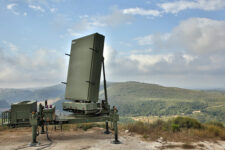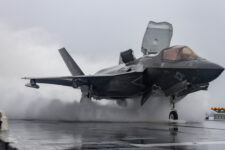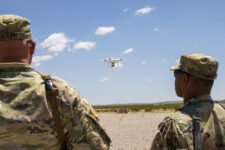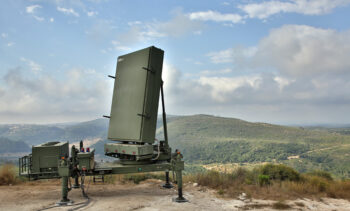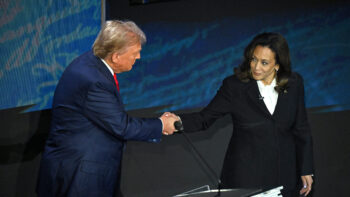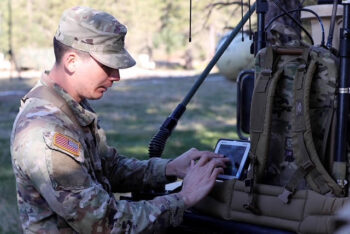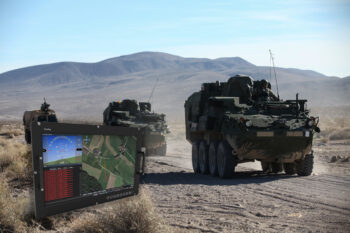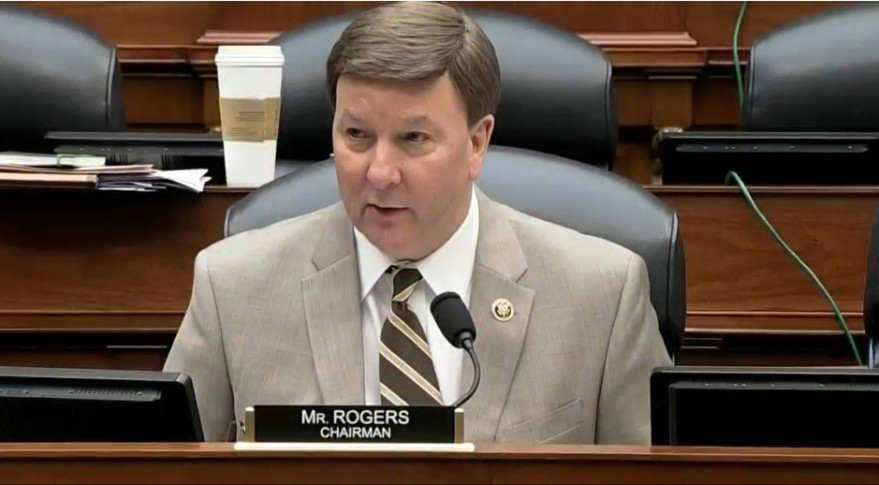
Rep. Mike Rogers chairs the House Armed Services strategic forces subcommittee, which has been remarkably vigorous in its oversight the last two years. (Just ask Air Force Chief of Staff David Goldfein or Secretary Heather Wilson.) His subcommittee keeps a close eye on America’s nuclear weapon delivery systems, as well as its warheads (which are built and maintained by the Energy Department.) He offers a characteristically blunt analysis of Russia’s nuclear ambitions and how we should respond to the man who bares his chest more than any other elected leader. Note carefully the many mentions of NATO. Read on! The Editor.
Vladimir Putin recently announced that Russia is developing and fielding four new and horrific nuclear weapons. They include a nuclear-powered cruise missile of essentially infinite range and a nuclear-powered underwater drone with an enormous, salt-the-earth nuclear payload. The announcement should come as a surprise to no one.
It certainly did not surprise the Trump Administration, who warned in a series of strategy documents, including the Nuclear Posture Review (NPR) released last month, that Russia’s increasingly aggressive actions over the past decade require a strong response to deter war and reassure our allies. Successfully implementing the recommendations from the NPR, the National Defense Strategy and the forthcoming Missile Defense Review will be critical to this effort.
But beneath all the Russian bullying, the timelines and very real capabilities of these nuclear weapon programs reveal an even more troubling picture. It is obvious none of these programs were started in reaction to the Trump administration’s 2018 NPR, which is barely a month old, nor in reaction to the Trump administration itself, which is just over a year old. These programs were initiated many years ago.
Putin claims his new nuclear weapons are being developed because the U.S. refuses to engage in arms control and is developing missile defenses to counter Russia’s strategic nuclear forces. This is as laughable as it is ridiculous, and directly in line with Russia’s longstanding tradition of accusing the U.S. of things for which Russia alone is guilty.
If Russia were truly interested in arms control, it would address its own numerous violations. Russia continues to brazenly violate the Intermediate-range Nuclear Forces (INF) Treaty by fielding and deploying ground-launched cruise missiles. Russia is also violating or failing to comply with numerous other arms control agreements, including the Open Skies Treaty, the Vienna Document, the Conventional Forces in Europe Treaty, the Biological Weapons Convention, the Chemical Weapons Convention, the Budapest Memorandum and the Presidential Nuclear Initiatives.
The U.S. strictly adheres to these and all other arms control agreements to which it is a party, reports compliance and directly and immediately addresses any concerns regarding its compliance.
The 2018 NPR prudently states that in arms control, the U.S. remains willing to engage, but “further progress is difficult to envision, however, in an environment that is characterized by nuclear-armed states seeking to change borders and overturn existing norms, and by significant, continuing non-compliance with existing arms control obligations and commitments.” In short, the U.S. simply won’t continue to sign agreements with a nation that is a serial violator of such agreements.
On missile defenses, the U.S. has taken great pains to show Russia that our deployed missile defenses simply cannot — by the laws of physics — counter Russian strategic missiles. The United States’ withdrawal from the Anti-Ballistic Missile Treaty in 2002, a key part of President Putin’s rationale for his new nuclear strike weapons, did not change the laws of physics. Instead, it is Russia that actually has ballistic missile defenses aimed explicitly at countering U.S. strategic missiles — Moscow’s layered rings of nuclear-armed ballistic missile interceptors are specifically postured to defend Russia’s leaders and command and control centers from U.S. retaliatory strikes. Those who decry any U.S. action as undermining “strategic stability” rarely mention this fact.
Even with the rise of China and the immediate danger from North Korea, Russia—with its massive nuclear weapons stockpile, and its equally massive inferiority complex—remains the top existential threat to America and the Western world. Like the Soviet Union before them, Russia continues a broad-based “active measures” campaign to foment and fund disarmament movements in the West.
So what is to be done?
On the nuclear front, Putin’s revelations only make it clearer that President Trump’s 2018 NPR correctly assessed Russia’s intentions and wisely recommended responses.
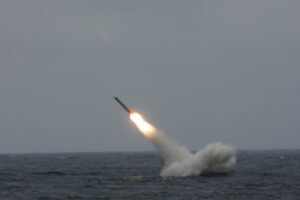
A submarine-launched land attack cruise missile.
The NPR recommends the U.S. add two supplemental capabilities to the nuclear triad modernization program originally initiated by President Obama: modification of an existing ballistic missile warhead to provide it a lower-yield option; and redeployment of a Sea-Launched Cruise Missile capability similar to that fielded by the U.S. for decades, only to be given up by the Obama Administration in 2010.
Both systems will make sure our deterrence and assurance remain robust in the face of these threats and Russia’s well-resourced and well-exercised strategy to use nuclear weapons early in a conflict. By ensuring the U.S. has highly credible options, unquestionably able to penetrate and deliver an appropriate nuclear response in any sort of environment, these supplemental capabilities will lower the odds that nuclear weapons are used at all. Congress must act to fund them and the broader nuclear modernization program requested by President Trump.
 Similarly, the U.S. must support and bolster NATO’s nuclear and conventional deterrence capabilities. Efforts resulting from the 2016 Warsaw Summit to strengthen and adapt NATO’s nuclear planning guidance, exercises, infrastructure, command and control and dual-capable aircraft survivability must be accelerated. We must also push our NATO allies to continue adopting missile defenses to complement and enhance the U.S. systems deployed in Europe. As the U.S. continues to invest billions of dollars to bring back capability and forces to Europe, so must NATO allies invest in the alliance’s security. Conventionally, we must push NATO to continue investing in defense capabilities to the 20 percent equipping target made at the 2014 Wales Summit and increase interoperability across the alliance.
Similarly, the U.S. must support and bolster NATO’s nuclear and conventional deterrence capabilities. Efforts resulting from the 2016 Warsaw Summit to strengthen and adapt NATO’s nuclear planning guidance, exercises, infrastructure, command and control and dual-capable aircraft survivability must be accelerated. We must also push our NATO allies to continue adopting missile defenses to complement and enhance the U.S. systems deployed in Europe. As the U.S. continues to invest billions of dollars to bring back capability and forces to Europe, so must NATO allies invest in the alliance’s security. Conventionally, we must push NATO to continue investing in defense capabilities to the 20 percent equipping target made at the 2014 Wales Summit and increase interoperability across the alliance.
Most fundamentally, continued steady leadership and signaling are required. The United States and our allies are not intimidated and will not be coerced. President Putin and his kleptocratic friends in the Kremlin may spend their nation’s increasingly limited treasure on foolish and dangerously misguided weapons, while the U.S. will continue to take strong, but prudent steps to defend our interests and deter war.
